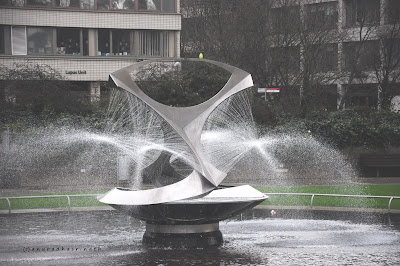I hope by now, you got a bit familiar with what I was attempting to tell in previous gyan about Aperture! And did you all had enough time to try them out. Now give me honest answer folks? Were you really able to understand?
Alright. I assume that you all are slowing getting familiarised. But any question, do drop me an email / comment. And I shall get back to you at the earliest (if I know the answer).
In continuation with what we learnt last, I am going to explain about the next pillar of exposure - Shutter Speed. The very name doesn't need any detailed explanation, because all of us know what shutter speed is. If you're not sure - Shutter speed is the amount of time the shutter is open and exposed to light. If Aperture is for the controlling the amount of light, shutter speed is for controlling the time required for light to expose.
Easy things first. Every camera has shutter speed. The shutter speed will be fixed in basic point and shoot cameras, while they can be changed in SLRs.
Ok..now the question comes to your mind is why should one use a shutter speed? Different kind of shutter speed will produce different effects on the photography. By adjusting the shutter speed, one can control the subject's movements - for instance lets say, subject is flowing water.
A fast shutter speed will freeze the flowing water while a slow shutter speed will make the water look blurred (since the subject is moving). If you want both movement and blur, you might need to use the flash. And these shutter speeds provide different effects in day and night time. That is fast shutter in day and that in night will give 2 completely different effects.
Like how apertures are measured by f-stops, shutter speeds are measured by seconds or fraction of seconds (in most cases). The larger the denominator, the faster the shutter speed is. For eg: 1/1000 is faster than 1/30. And 1/60 is the normal speed we use in our cameras. If the speed is more than 1/60, it is still easy to take photographs. But if its reduced to anything less than 1/60,the photos get shaky. You might be sometimes wondering why the photo is blurred (especially when you try taking night shots). The reason is this. If it reduces below 1/60, you need a tripod or some means to stabilize the image. Hand held does not work unless you are a pro!
Let me try explaining these concepts by using illustrations from my archives.
This is captured with high shutter speed - 1/500 sec. In this, you can see the actual water movement being captured.
The same subject is captured with a slow shutter speed in this picture - 1/4 sec
You see the difference between these 2 pictures? Hope this gives you some heads up to start working on shutter speed. Try them out. I will write more in next gyan.


So, to capture objects in motion we can use high shutter speed right? What about capturing objects in dark? What settings are required for that? Please deal with that topic in a future post. Also, try to address the minimum settings we can play with in our point and shoot cameras. Not all of us have DSLR's.
ReplyDeleteDestination Infinity
Yes DI. You are too fast! Now capturing objects during night are tricky. If they are moving objects - even trickier! I will give some examples of night shot in next post. I understand DI. I do want to write for everyone,but some of these settings are available only in SLRs. But I will definitely do what's possible. I love my point and shoot, and that's when I learnt a lot of photography! That's my first baby!
DeleteWell captured.. I went for a mini photo class at some point.. but have now completely forgotten all that they tot me.. This was a nice refresher..
ReplyDeleteDo share your learnings Patricia! I am a self taught photographer :) But glad that these posts were helpful to you :)
DeleteGreat tips. Thanks!
ReplyDeleteThank you Indrani.
Delete